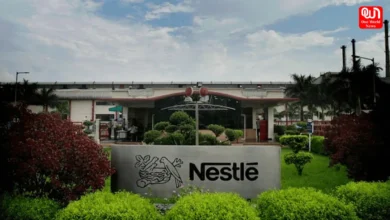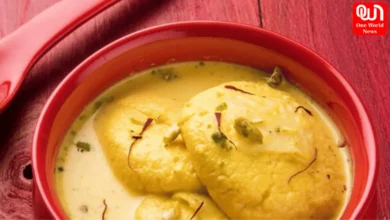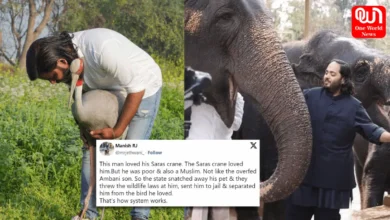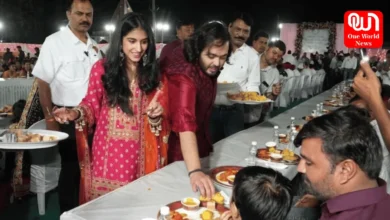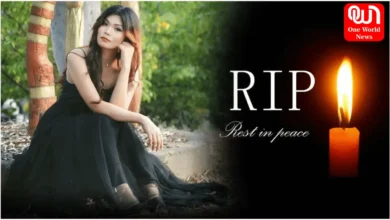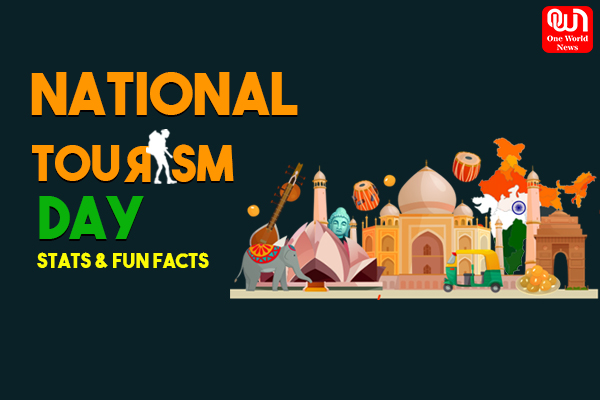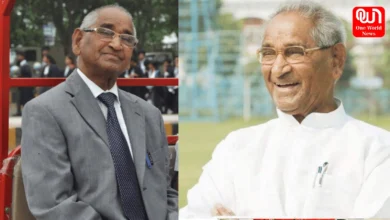
Is India Becoming More Intolerant? What does ground reports say?
Highlights
- Is India becoming More Intolerant ?
- The Story That Media Tells
- Is Polarisation New To Indian Politics?
A biased media reporting and international conferences such as ‘Dismantling Global Hindutva’ pushed people into a fear of losing their religious identities
In the first nine months of 2021, India registered over 300 attacks on churches across the country. Several mosques were targeted by right-wing activists, whereas 16 mosques were allegedly vandalized in Tripura in retaliation to anti-Hindu violence in Bangladesh. A recent video of Bajrang Dal activists, disrupting the Christmas Eve celebration, created a fresh controversy on the future of minorities in the largest democracy. Prime Minister Modi received heavy criticism from national and international media for being silent on the attacks on minorities.
The opposition and several media organizations alleged PM Modi and BJP for supporting right-wing extremists and provoking riots across the country. Several statistics suggest that the attacks on minorities have increased under Modi’s regime. But do the allegations fit right on the Image of Modi and new India, or is it just an anti-Modi trend? Would it be fair enough to say that India is becoming more intolerant under the Modi government?
The Story That Media Tells
As per the India Spend, 97% of cow-related attacks were reported under Modi’s regime between 2010 and 2017. 32 of 63 cases were reported from the BJP governed states, whereas 20 cow-vigilante attacks were reported in 2017 alone. Since Modi took the Prime Ministerial office, Hindu majoritarianism and nationalism have been on the rise. We saw how anti-Muslim slogans were raised during the national-wide protests against the CAA bill by BJP leaders. BJP allies and Hindu extremist groups such as RSS and VHP were accused several times of calling out for the Muslim genocide.
In a recent viral video from a conclave at Haridwar, Yati Narsinghanand, a self-proclaimed Hindu religious leader, openly called for a Muslim genocide, the event was also attended by a BJP leader Ashwini Upadhyay.
Since Modi took the Prime Minister’s office, India saw a decline in international democracy ratings for reporting increased numbers of attacks on minority groups. EIU’s 2020 democracy index called India a ‘Flawed Democracy’ for increasing the “Hindu nationalist agenda” under the BJP rule. Another V-Dem Institute’s report called India an “electoral autocracy” in its annual report for increased attacks on minorities, journalists, and activists.
India saw a wave of right-wing extremism and reportedly increased attacks on minority groups under the BJP rule.
What Does Reality Look Like?
India has over 200 million Muslims, which is around 11 percent of the world’s total Muslim population and the third-largest in the world. As per the PEW study, the Muslim population in India is the fastest-growing population among all the religious groups in India with a fertility rate of 2.5%. The Christian population increased to 28 million from 8 million between 1951 and 2011.
Read more: 5 Reasons Why You Should Be Your Best Friend, Enjoy Solitude!
In Indian history, the country has never been more or less intolerant. The pages of Indian history do not find a period that lacks communal violence, especially between the two major religions. The country has faced communal tensions between Hindus and Muslims even before the partition. Unlike the neighboring countries such as Pakistan, Afghanistan, and Bangladesh, India does not see one-sided attacks, India faces clashes from both religious groups. It is not that India became extremely intolerant overnight, communalism and communal violence in India have a long history. Pakistan and Bangladesh are the two greatest examples of communalism in India.
The reality on grounds seems different and calling Modi or BJP a root cause of religious intolerance in India would not be justified. More or less, riots, cow-related attacks, religious intolerance, and hateful speeches have always been there. Between 1950 and 2015, religious riots claimed more than 14,000 lives in India. Religious crimes are not one-sided, and they never have been. There are several riots or communal attacks before 2014 that tell the Hindu-Muslim extremism was always there.
In 2013, two people were killed in a communal clash in Nagla Mal village in Meerut after a mob of Muslim communities switched off the temple loudspeaker and beat up a few Hindu men.
In 2014, a Muslim mob thrashed a 49-year-old social activist for merely distributing his book, which was against cow slaughter. Following the same year, a Muslim PETA activist was attacked, harassed, and threatened with stoning and stripping by a Muslim mob for promoting a vegan Eid.
As per the Ministry of Home Affairs, the country reported 823 communal violence in 2013, which was 668 in 2012. While in 2019, India reported 438 communal cases nationwide and 512 in 2018.
In May 1983, Indira Gandhi wrote to home minister Prakash Chandra Sethi “The increase in communalism in recent months and a large number of attacks on the lives and properties of minorities is cause for deep sorrow. These incidents are a blot on the good name of our country”
Read more: ‘SHAMEFUL’: Dog brutally beaten by a Police Personnel, painful video will leave you in tears!
Is Polarisation New To Indian Politics?
“We (Muslims) are 15 crores, but remember we can still dominate over 100 crore Hindus and imagine what we can do to you.” AIMIM leader Waris Pathan.
Fascism, intolerance, islamophobia, saffron terrorism, and Nazism terminologies made a red carpet entry in India after BJP’s historic win in the Lok Sabha elections. Nevertheless, polarised politics and hateful speeches are not new in India. However, it keeps changing according to the political weather. BJP is well-known for its polarised politics, but other political parties are not behind the lines.
The recent political climate change made Rahul Gandhi wear Dhoti and Janeu to win the Hindu votes. During the Bengal Assembly elections of 2021, Mamta Benerjee shouted her Gotra and called herself a prominent Hindu Brahmin.
Polarised politics was not started after 2014, and it is certainly not a BJP property. Using Hindus, Ram Mandir and the ‘holy cow’ was not started with the BJP, and looking at the history it seems the cow has a long history in Indian politics. After the creation of the Indian National Congress (Requisitionists), Indira Gandhi used ‘cow’ as a symbol of her party and asked Hindus to her in the name of the cow. The Ayodhya Ram Mandir is not a favorite topic of BJP only.
In 1986, Uttar Pradesh chief minister Bir Bahadur Singh unlocked the gates of Babri Masjid on the advice of Rajiv Gandhi to appease the Hindus in recompense to the Shah Bano amendment.
AIMIM President and a prominent Muslim leader Asaduddin Owaisi has always been in the light for his controversial speeches. He was reportedly seen invoking Muslims and delivering anti-Hindu speeches multiple times. Indian politics was never been separated from the polarisation, and connecting it with BJP would be unjust to the history.
The condition of Muslims has become like a ‘band baja party’ in a marriage procession where they (Muslims) are first asked to play music, but are made to stand outside on reaching the wedding venue: AIMIM president Asaduddin Owaisi in Kanpur (26.09) pic.twitter.com/nY61BBX7gH
— ANI UP/Uttarakhand (@ANINewsUP) September 27, 2021
But Are We Really Seeing A More Intolerant India?
It is a matter of fact that the internet has made it easy to collect the source of news and to reach more new stories, which was very limited earlier. The Internet has played a significant role in spreading news, fake news, and reaching out to more people. It helped the digital media and political parties to create a wider appearance and influence people with their political and social views. The Internet has also made news more accessible to a larger population, which was not very much possible a decade ago.
The other thing is that the online media significantly increased after 2010 in India. For instance, there are many websites , which are known for their left-leaning liberal identities and being quite aggressive and impulsive towards the BJP, emerged after 2014. Several right-leaning media too entered into the competition too, dividing the readers into more categories. It is not deniable that the media has played a significant role in creating a more fearful, divided, and intolerant environment.
Moreover, it is the nature of the media to criticise the ruling government, and Modi has always been in a bad light, especially after the 2002 Gujarat riots. Big news companies, such as The Guardian, BBC, and Aljazeera have always been a critic of right-wing politics and often alleged for being biased. Many organisations, including the Vivekananda Centre in London and the Hindu Council of the United Kingdom, criticised the BBC for showing an anti-Hindu bias.
Read more: Caregiver of Covid-19: Are You The Caregiver of A Covid-19 Patient? Here are Some Guidelines for You
A biased reporting from the media organisations and international conferences such as ‘Dismantling Global Hindutva‘ has provoked people and pushed them into a fear of losing their religious identities. People are very sensitive to their religious identities and can easily be triggered. Remember how the Islamic country, along with India, reacted after France President Emmanuel Macron publicly showed the cartoon of Prophet Muhammad. The increasing population of minority groups in India and increasing religious extremism among all is creating fear of losing the dominance and identities of the other religious groups. And with the diversity and multiple faiths, it is very likely and expected that India sees communal tension in every chapter of its history.
Accusing Modi and BJP of the increasing intolerance in the country would not serve justice to Indian politics. However, as a Prime Minister and securing dominance in the parliament, it is the greatest responsibility of Modi and BJP to create a more secular image of the country.

